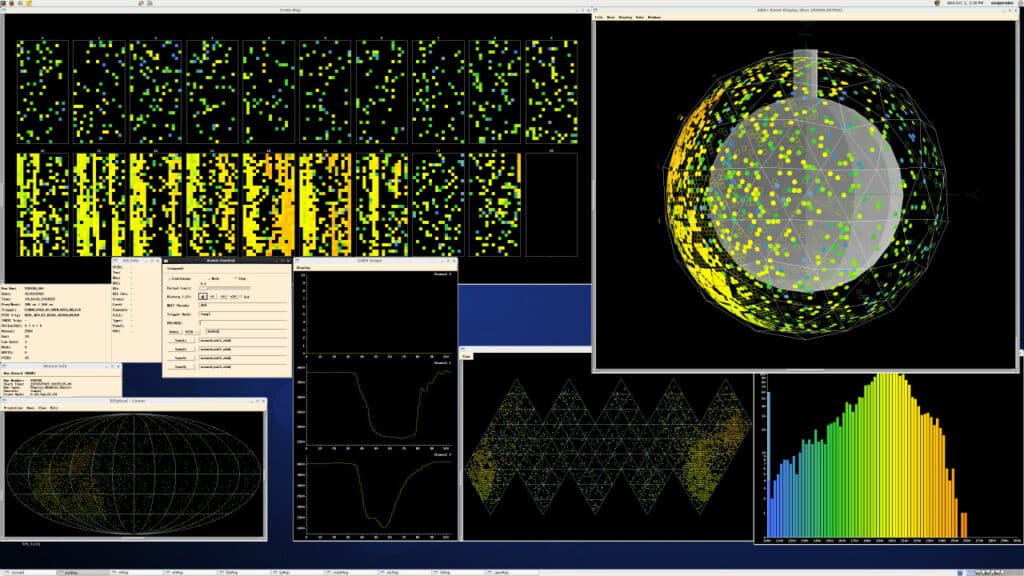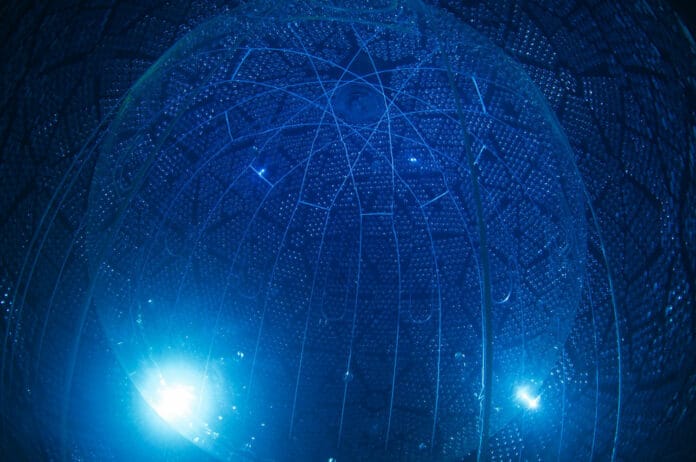The SNO+ Experiment is a liquid scintillator detector for studying neutrinos. Located 2km underground in Vale’s Creighton mine near Sudbury, Ontario, Canada, the detector is being readied to search for a so-far-undetected nuclear-decay process.
Recently, the experiment has made a breakthrough: They captured the interaction with water of antineutrinos from nuclear reactors. The discovery opens up the possibility of producing neutrino detectors from a benign substance that is simple to work with and accessible at a reasonable price, two essential conditions for using the technology to inspect nuclear reactors worldwide.
On March 1, 2023, the liquid that fills the detector glows when charged particles pass over it. However, in 2018, water was added to the detector to calibrate its parts and characterize the inherent radioactive background signal after the experiment was upgraded. The antineutrino signal was detected when the researchers took advantage of the opportunity to conduct more experiments before the liquid was changed after finishing those observations.

Analyzing that 2018 data, the team found a 3-sigma signal that matched that expected for antineutrinos coming from nuclear reactors at least 240 km away.
SNO+ Collaboration member Logan Lebanowski said, “It intrigues us that pure water can be used to measure antineutrinos from reactors and at such large distances. We spent significant effort to extract a handful of signals from 190 days of data. The result is gratifying.”
Journal Reference:
- A. Allega et al. (SNO+ Collaboration), “Evidence of antineutrinos from distant reactors using pure water at SNO+,” Phys. Rev. Lett. 130, 091801 (2023). DOI: 10.1103/PhysRevLett.130.091801
